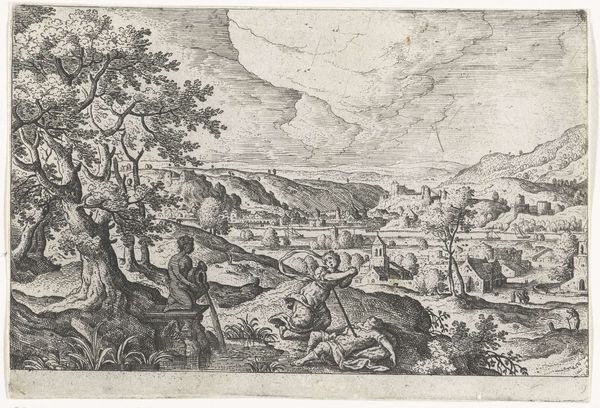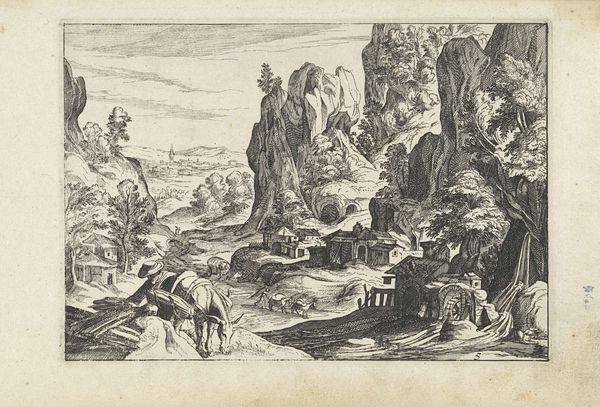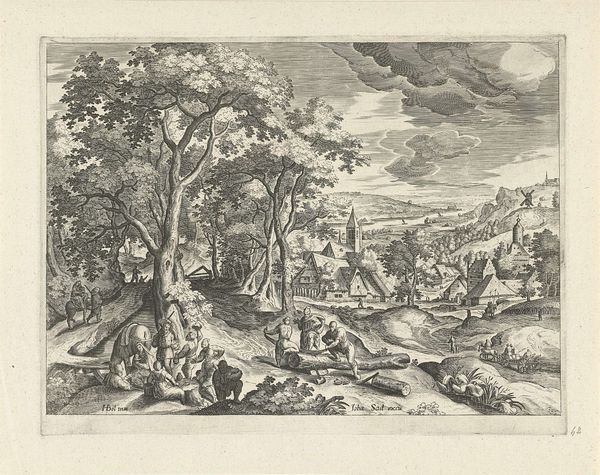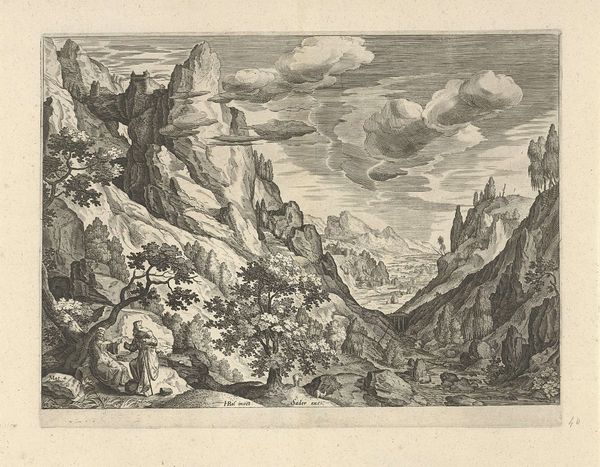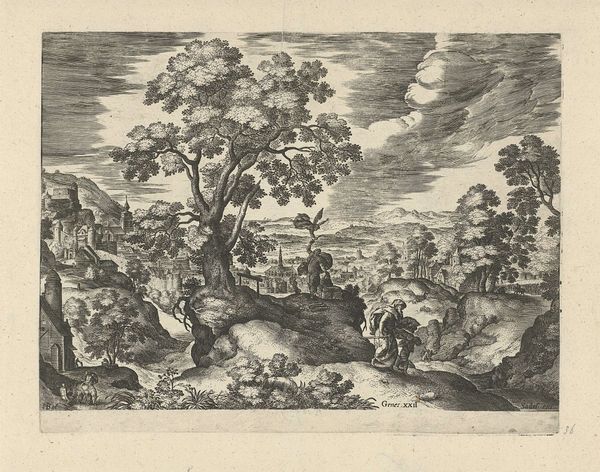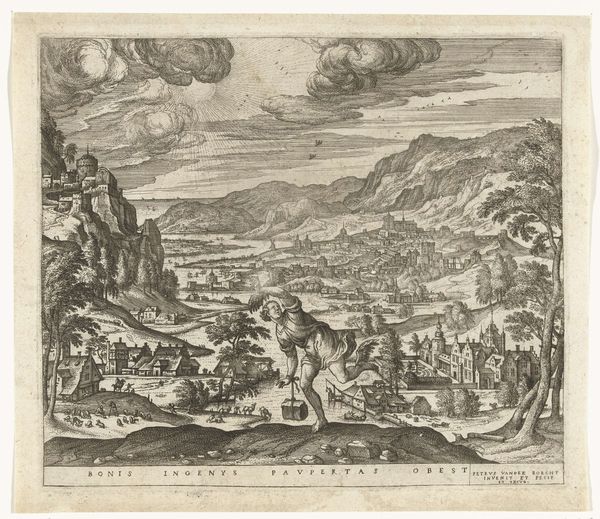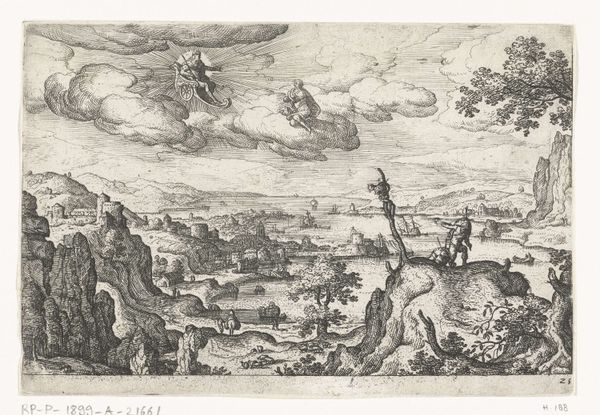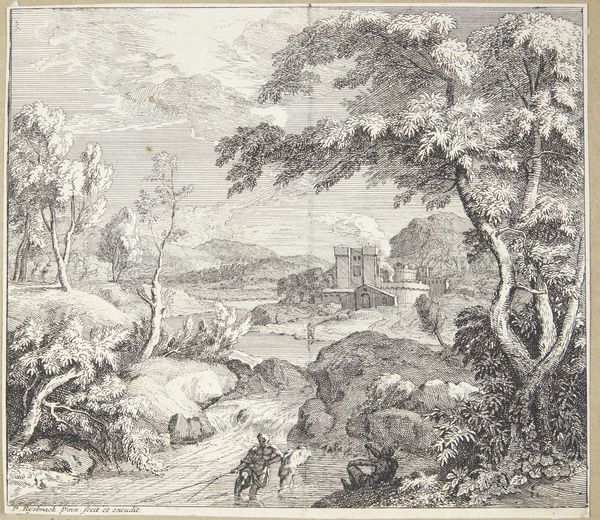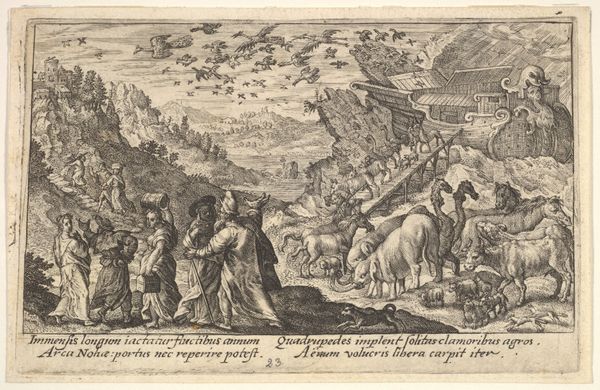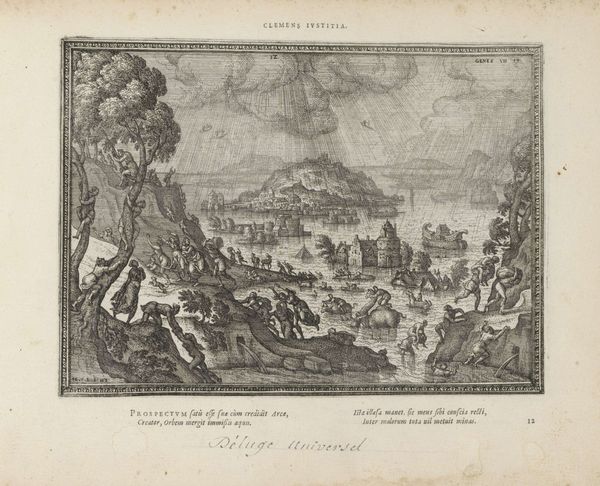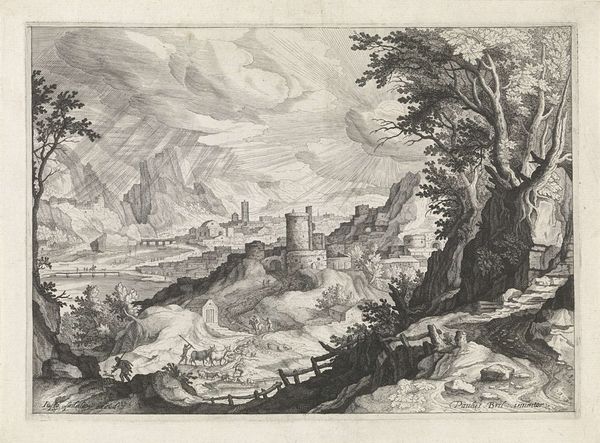
drawing, ink, engraving
#
drawing
#
toned paper
#
light pencil work
#
narrative-art
#
baroque
#
pen sketch
#
pencil sketch
#
landscape
#
form
#
personal sketchbook
#
ink
#
ink drawing experimentation
#
pen-ink sketch
#
line
#
pen work
#
sketchbook drawing
#
cityscape
#
sketchbook art
#
engraving
Dimensions: height 208 mm, width 298 mm
Copyright: Rijks Museum: Open Domain
Curator: Here we have "Volcanoes and Storms," a drawing created between 1682 and 1733 by Romeyn de Hooghe. It's a dramatic scene rendered in ink and engraving, held here at the Rijksmuseum. What’s your first impression? Editor: Immediate chaos, isn't it? The churning sea, erupting volcanoes, folks scrambling for their lives on the shoreline… it feels almost theatrical. Like a disaster scene from a really intense opera. I am strangely attracted by it, as by a really terrific movie. Curator: De Hooghe was very involved in the political discourse through imagery of his time. Natural disasters held great symbolic and historical power, so these images would have served a definite cultural purpose beyond just the aesthetic. Editor: Absolutely. I think the power lies in that blend –the raw spectacle meeting something deeper. What strikes me is how delicate the lines are, considering the subject matter. Like holding a storm in the palm of your hand. The light pencil work contrasts nicely with the absolute pandemonium. What was his fascination with destruction? Curator: He witnessed firsthand several tumultuous periods in Dutch history. De Hooghe was, first and foremost, an engraver of current events; sieges, coronations and military reviews. As such, natural disasters were just one category of current events available to him for social commentary. Also keep in mind the popularity of the Baroque style with its dramatic light. Editor: So it's social commentary meets Baroque drama. Makes sense! It also reflects, for me, that primal human fascination with the apocalypse, or just disaster, really. And, I see a deeply personal exploration. Each person fleeing or helping. In their faces, the true spirit of humankind reveals itself. Curator: And in its own way, the engraving offered a controlled space for imagining it all. Reflecting on catastrophe from a safe distance can tell you quite a lot about what your current values actually are. Editor: You're right! A meditation, almost, on human resilience amidst absolute devastation. Curator: Indeed. De Hooghe created a scene rife with destruction to encourage reflections on how to best construct civic identity. Editor: So, destruction leading to a kind of rebirth. Nicely put! Gives one pause, doesn't it? Curator: It certainly does. Thanks for walking with me through the work! Editor: My pleasure!
Comments
No comments
Be the first to comment and join the conversation on the ultimate creative platform.
